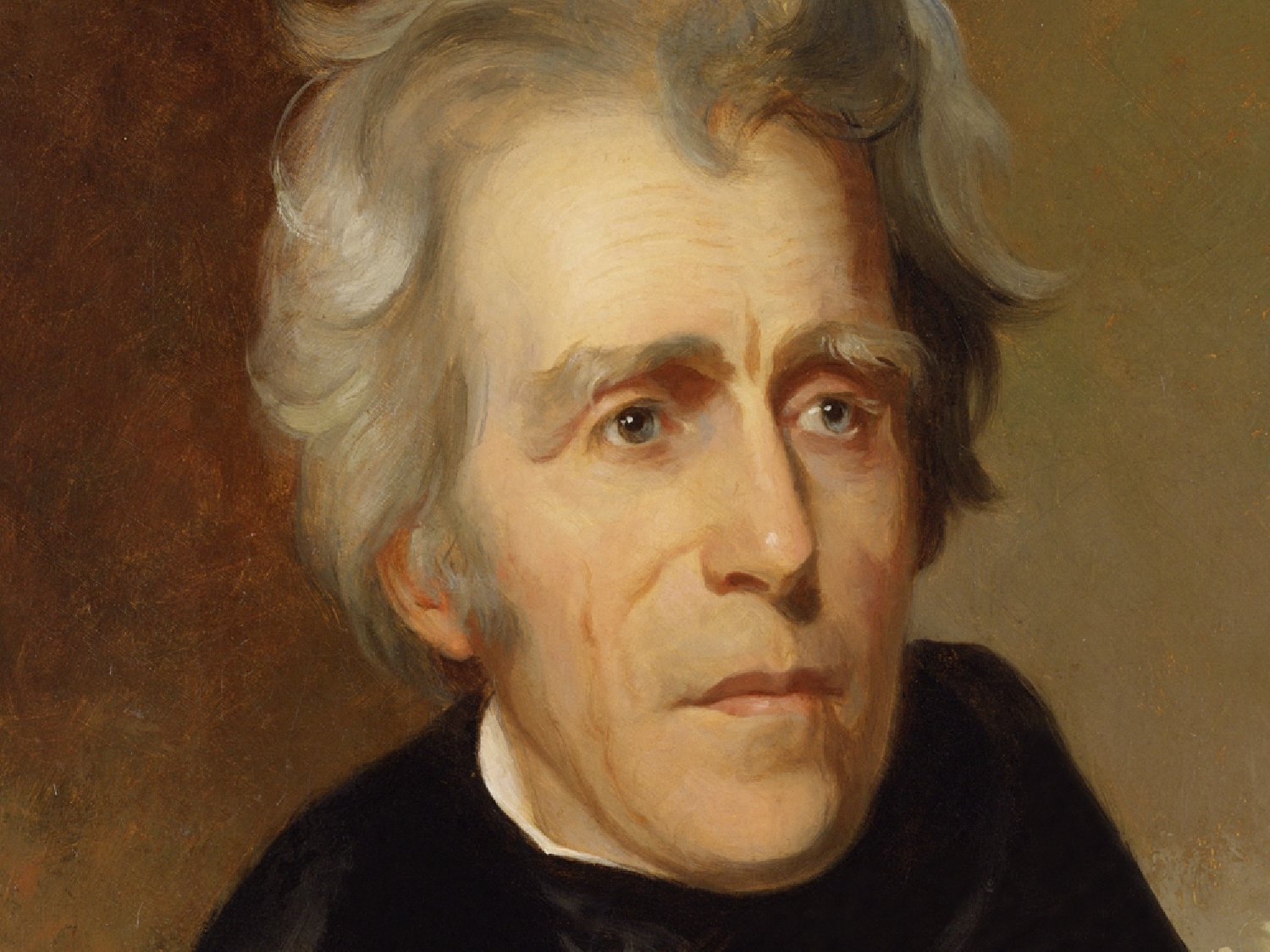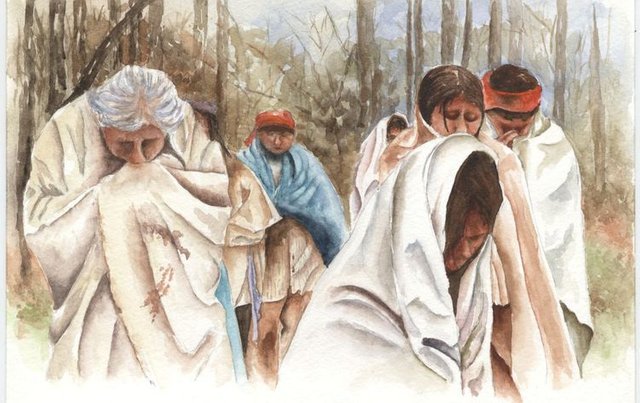Andrew Jackson: The Man Behind a Confidence Game
The strategy behind civilizing Indians was insensitive but held strategy. Indians were given two options: go the American way or die off through relocation or removal. Those who were going the American way were fooled. Not only did the Indian abandon his way of life, but he had to make himself a farmer, and a property owner. This easily resulted in him willingly setting up the enclosure of his lands. Being put through owning property only provided legal documentation to take the land away from the Indian. The Americans would say it was the Indian’s fault. He should have handled his money better or not have gotten into debt that he could never pay off.
It was the American who manipulated every transaction for the Indian that had him go into debt. The American had encouraged the Indian to engage in commercial exchange with whites. In turn whites steered the Indians into debt. When doing so most of the whites would mock and call them morons. The civilizing of Indians was just a vital part in acquiring more lands for white settlement and development.
This led to America needing its own literature. Robert M. Bird resented and rejected the market system because of its influence on literature. The answer was soon born. The American recognized the robbery and murder involved and wrote its own history. Andrew Jackson personified Indian removal for the sake of “white” progress (Lecture Outline: Jackson Against Indians).
The Indian was robbed of his way of life by settling into the submissive form of the American way.
Andrew Jackson was president, a military and public figure, as well as a politician. By recognizing that Indian removal was necessary he also needed “confidence” to avoid room for guilt and moral agony. The issue was the identity of the white American who was personified as the virtuous people. He needed to keep America in that state of virtue.
America could not be a virtuous republican agrarian order without the Indians removal. Jackson embodied the self-made republican who believed one must always settle the score themselves. His key belief was republican virtue through war which dealt with purification and regeneration through violence. This solution was based on violence against the Indians (Lecture Outline: Jackson Against Indians).
He needed to fight against the Indians. Jackson had a struggle with his own body, whites conjure war against the Indians, while Indians personified the body. What was Jackson to do? Jackson was energetic about Indian removal to the public. He was never rude or crude about the issue. Justification for convincing the public to favor Indian removal was for protection and security. The confidence game calmed his and the public’s guilt. Jackson did a key decisive role in Indian removal from the South. During the age of Jackson (1815-1840) 70,000 Indians were removed and relocated. Jackson supported the state’s effort to do away with tribal units and to extend state authority over Indians (Lecture Outline: Jackson Against Indians).
Georgia, Alabama, Mississippi is where highly illegal activity began. Indians were “treaty peoples” only federal authorities could handle the Indians. In 1802, the Indian Intercourse Act began. No Indian land cessions except through the bilateral treaty, only federal law operatives could be allowed in Indian territories, and Jackson was a scofflaw. He encouraged and abetted white intrusion and land resource grabbing even from “civilized” tribes (Lecture Outline: Jackson Against Indians).
Jackson’s get-moving ploy began fooling “federal impotence” in enforcement against intrusions and grabs. He actively conspired and collaborated with states against Indians. He used stepping power (or manipulated) from Indian Chiefs and authorities into desired outcomes. The use of “confidence game” was involved. Two “legal” methods were available to Jackson. One was indirect removal through the land allotment programs, which involved surveying of Indian lands, and the division into individual plots, or allotting individual plots to individual families. By reducing Indians to citizens, they stripped them of tribal membership and were laced with the language of “liberty”. Also, white speculation farmers and planters “legally” dwindled the Indians out of their land. The second option was with speculations that bribed certifying agents. Speculations acquired 80-90% of lands granted to Indians in the South (25 million acres). Jackson absolved his administration and whites of responsibility. He states Indians have been “given” land, responsibility, and they “blew it” (Lecture Outline: Jackson Against Indians).
This gave rise to the treaty method of removal. This involved entire tribes and nations including the Cherokees. In 1814-1935 the treaty of cession was attempted but rejected by full tribal council. In December 1834, Rev. John F. Shermerhorn negotiates with a pro-removal minority faction in New Echota, Georgia. John Ross jailed, locked up Cherokee Indians, and newspapers were shut down. This resulted in the treaty of New Echota.
Title: Artist Depiction National Park Service
Image Credit: fws.gov
The Trail of Tears in 1837-1838 resulted in 15,000 Cherokee Indians marching inhumanely towards relocation. 4,000 died through this journey. This march was ironic, to say the least Cherokees were more civilized than some whites, and the Cherokees were the most civilized of the Southern Indians (Lecture: Jackson Against Indians).
Image Source: Google
Image Credit: Unknown
In the march of tears no infants, children, elderly, or women were spared. Cherokees were to be brought under Georgia’s state authority. Jackson needed a huge moral disguise as it was necessary. Jackson told the people and himself that he was the “White Father” of the Cherokees and they were his “children” and he was simply doing his role. This in turn became the nation’s confidence illusion. Jackson rationalized that partial evil for the general good was necessary. He reassured himself what happened to the Indians was inevitable and moral (Lecture: Jackson Against Indians)
Jackson then began the Bank War of 1832-1836. Jackson vs the Second Bank of the U.S. articulated a more positive definition of things for Jacksonians. He defined “the people” or “the real people” and the bank was a threat from above. Improper concentration power was what the bank entitled. It became a fight “the real people” vs "the threats from below". Jackson’s objective was defend original virtues of the old republic. He noted that improper concentrations of power rested in the banking system. Basically, the bank was another King George III, and both the Indian “savages” and the bank avoided “honest labor”. Bank elitist skimmed off “real people’s” fruits of labor. Nearly all sides were brought to this narrative. The fight of “real people vs threats from below” allowed Jackson’s confidence game to continue. The anti-bank Jacksonians, in league with the state, and elite interests knew that the break-up of the bank paved way for the 1837 Depression (Lecture Outline: Jackson Against Indians).
Jackson used his confidence game to hide not to illuminate. Jackson’s actions were white immoral actions interpreted from former general to then president. Andrew Jackson was the nation’s chief confidence man for being former general and president. He threaded the narrative as security from the “others” from “the outside” and reassured the white’s moral conscience in exchange for "safety from the others". In short, Jackson’s confidence game obscured the general public’s critical awareness and hid him from ever being exposed.
Works Cited
Duran, Joaquin. "Jackson Against Indians." 2014 Lecture.


